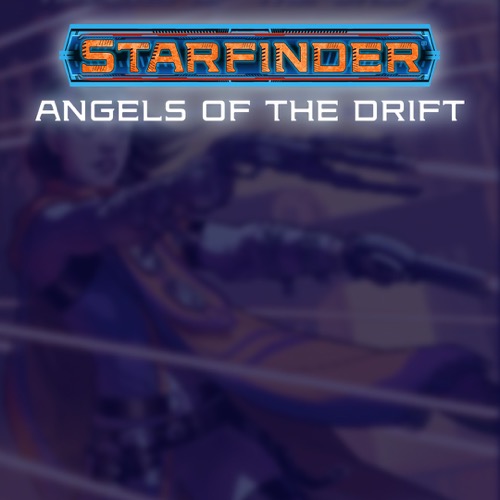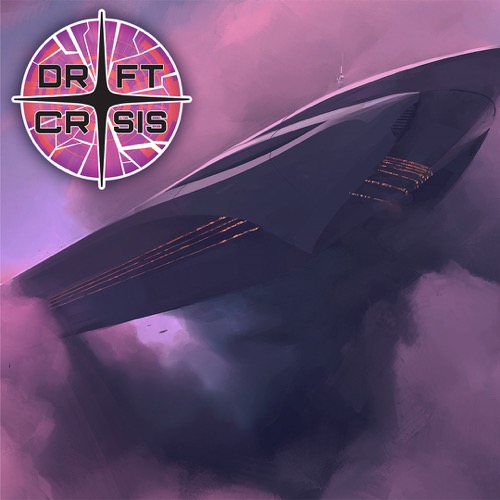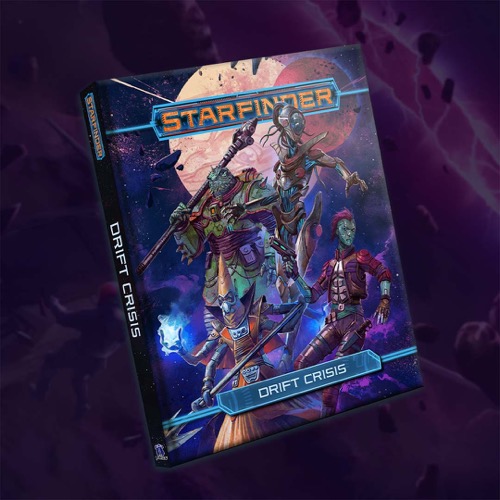Hey folks! My name is James L. Sutter—you might remember me as Starfinder's first Creative Director. Though I've been away for a bit, exploring new worlds, I was absolutely thrilled to return as the writer for the first-ever Starfinder comic series from Paizo and Dynamite!
Back when we were first dreaming up Starfinder, we knew we needed some sort of faster-than-light travel, but we wanted something that felt unique—not just another Star Trek-style warp or Star Wars-style hyperspace. I'd personally always been a fan of Event Horizon's "ship drive tears open a hole to Hell" idea, which seemed like it would present a lot of opportunity for adventure. At the same time, games like Pathfinder and D&D had already long established that plane-hopping through the realms of the afterlife is a great way to shortcut across vast distances on the Material Plane. So we thought: what if instead of traveling by planeshifting to somewhere like Heaven or Hell, you instead entered a whole new dimension, one dedicated to (or created by) faster-than-light travel? And what if every time you did, it tore off a little piece of one of the other planes to add to itself—making the dimension both hugely useful and a parasitic cancer on reality?
Thus was the Drift born, and with it one of the most recognizable and mysterious elements of our game's setting. We'd known from early on that we wanted Starfinder's "modern day" to be shortly after the discovery of faster-than-light travel: the beginning of a galactic land rush, complete with all the excitement, conflict, and moral quandary of an age of exploration. And the question of how Drift technology was created let us build up canon around an important new deity: Triune the All-Code, god of machines. We decided that the discovery would come from Triune sending out "the Signal," a magical message in a million different forms telling the cultures receiving it how to construct ships capable of accessing the Drift.
The Drift is crucial to every element of galactic society, from trade to basic communication—which makes any threat to it unbelievably dangerous. Starfinder: Angels of the Drift takes place during just such a threat: an event called the Drift Crisis, in which the Drift suddenly begins behaving unpredictably, shunting starships out in random locations or swallowing them whole. When our story begins, Navasi and her crew have been having a hard time finding passengers willing to brave an unstable dimension—until a spectra, a magical robot-like being native to the Drift, hires them to help it take the Signal to an advanced culture that somehow missed the message. But a new world comes with new opportunities for exploitation, and our heroes aren't the only ones eager to make contact...
Of course, a story is more than just its setting. While I've written for the Pathfinder comics before—series like Runescars, Hollow Mountain, Origins, and Goblins—with Starfinder, I knew I wanted to take a different approach. You see, in June I'm coming out with my first young adult novel, Darkhearts, a queer romance all about falling for the boy who stole your chance at rock stardom. And while the Starfinder comics aren't a romance (yet), I learned some lessons writing that book that I'll be bringing to Starfinder's epic science-fantasy action.
The most important of those is that stories are about characters—and that goes double for comics. After all, we don't return to the X-Men month after month for the plots; we do it because we want to see Wolverine be our Grumpy Mutant Dad, or watch a charismatic Magneto make some uncomfortably good points. And a character is more than just a costume or a role in a party—they're their problems, their relationships, their point of view.
So when I sat down to outline Starfinder: Angels of the Drift, I made sure that every character had some emotional or philosophical issue they were wrestling with—a challenge to their worldview that could let them grow (or not). Without spoiling where everyone ends up, below is a brief introduction to the party members and how they'll be pushed emotionally over the course of the story.
Obozaya: Our brash vesk brawler is obsessed with two things: honor and dance music. While Obo's never been one to walk away from a fight, this series will force her to ask whether there's anything more important than being the best—and if violence is always the answer.
Navasi: As self-proclaimed shot-caller for her merry band of mercenaries, Navasi's used to using quick wits and fast talk to keep her party in food and fuel. Times are tough, and she knows their vagabond life depends on her ability to cut a deal—but how much can a reformed pirate squeeze the needy before she's no longer reformed?
Ciravel: As a precog, Ciravel sees glimpses of the future, and uses them to help lead her friends—and the galaxy—down the best possible timeline. But how can she allow others to make their own choices when she can already see the outcomes? Is freedom really a virtue?
Quig: Nobody can match Quig's ability as a mechanic—or at least, that's what he thinks until he's forced to work with a spectra who can simply ask machines to fix themselves. With his role in the party in question, can our hotheaded, hard-partying rat cope with becoming obsolete?
Keskodai: For a shirren like Keskodai, individual choice is everything—the divine gift that distinguishes them from the mindless, ravenous Swarm. It's why he carries his son, Chk Chk, in a cradle-jar on his belt, so the larva can see the galaxy and decide his own place in it. But when the bullets start flying, everyone's favorite death priest will have to ask himself whether putting his child at risk is really a responsible choice.
Thanks so much for reading, and I hope you'll check out Starfinder: Angels of the Drift!
James L. Sutter
Writer, Starfinder: Angels of the Drift
Lasers and Feelings: Inside the New Starfinder Comics
Friday, May 19th, 2023






















